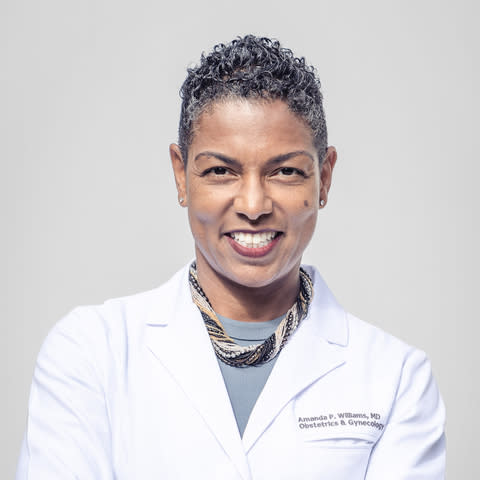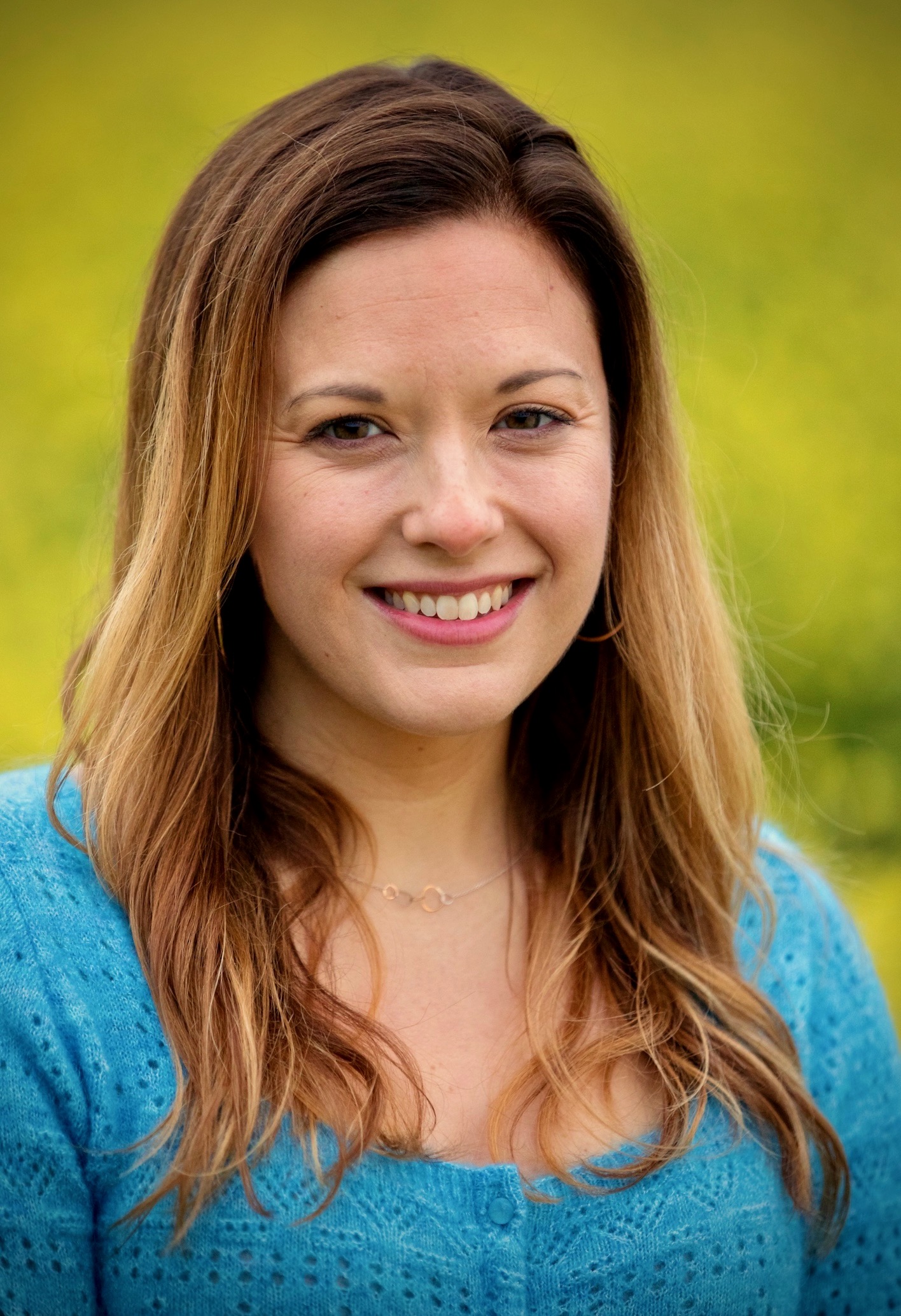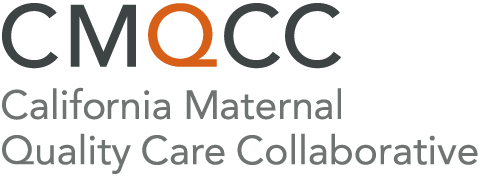When Angela Jones became pregnant for a second time in 2022, she had five risk factors for preeclampsia – she is Black, over 35, overweight, lower income, and her daughter was born nearly 20 years prior. Yet, none of her healthcare providers ever assessed her risk for developing preeclampsia, nor did they prescribe low-dose aspirin – a simple, highly effective, over-the-counter medication that prevents preeclampsia.
For those who are pregnant, preeclampsia is a serious health problem that can develop after 20 weeks gestation or postpartum. It causes high blood pressure and may impact major organs in the body, like the heart, brain, and liver. Eclampsia is the most severe complication of preeclampsia and results in seizures. Because preeclampsia cannot resolve until the baby is born, it also contributes to the high incidence of preterm birth in the U.S., which in 2022 was approximately one in 10 babies.
Infographic provided by March of Dimes, retrieved from https://www.marchofdimes.org/preeclampsia, used with permission.
Compared to other racial or ethnic groups, Black mothers and birthing people are particularly at risk for preeclampsia because of structural racism. They face inequities in access to quality perinatal care and are at increased risk of biased care inside healthcare systems that may contribute to poor outcomes.
Angela was diagnosed with preeclampsia during her seventh month of pregnancy following a high blood pressure reading during one of her prenatal check-ups. Her obstetrics team sent her to the emergency room, where they monitored her for a few hours and then sent her home without any medication for her symptoms or even a home blood pressure cuff. The next month, she needed an emergency cesarean delivery. Her newborn son required treatment for jaundice and went to the neonatal intensive care unit (NICU), where he stayed for about a week.
When Angela heard the California Maternal Quality Care Collaborative (CMQCC) had a Patient Advisory Committee as part of their initiative, "Low-Dose Aspirin to Prevent Preeclampsia and Related Preterm Birth," she immediately wanted to get involved. Angela joined the Committee in 2023 and is now pregnant with her third child. She is eager to share her story so that others might know what to look out for during pregnancy and better advocate for themselves.
The following interview between Angela Jones [AJ] and Science Writer Laura Hedli [LH] has been edited for length and clarity.
LH: Tell me more about your experience with preeclampsia during your second pregnancy.
AJ: I was taking Tylenol like I was eating candy. I would pray that my baby would be okay because I would take a Tylenol one hour, and maybe an hour later, I'd take two more because my headaches were terrible.
I would go to the OB and let them know, “My headache is bad. I can't even sit up in this room. I'm uncomfortable. The Tylenol isn't working for me. What can you guys do for me?” They just said that I had the headaches because I had preeclampsia. They never once put me on any high blood pressure medication. They never told me anything about low-dose aspirin. And I didn't know how serious preeclampsia was because I had never had it before. Because when I was pregnant with my daughter, I was 19. Pregnancy was a breeze for me. I was sick, yes, because that was my first time being pregnant. I threw up a lot, but I never had preeclampsia.
When I was in my eighth month with my son, mid-November 2022, I felt that something wasn’t right with me. I felt funny. And then my vision was impaired. It got worse and worse. I was scared, so I called my Dad. And as I was talking to him, my speech started to be impaired. He didn’t understand anything I was saying. But I thought it was making sense. By that time, my daughter came into the living room where I was and I gave her the phone. My Dad told her she needed to call somebody because he didn’t understand what I was saying. So then my daughter called my sister, who ended up coming. And by that time, I am telling you, my vision, it was like both of my eyes turned into one. My daughter had to help me down the stairs. I remember getting in the car, but after that I don't remember anything.
I still don't remember anything. I don't remember having my son.
LH: How did you try to fill in the blanks for yourself?
AJ: After I had my son, I started to ask questions like, "What happened to me?" And they told me I had preeclampsia that turned to eclampsia. I don't remember them really telling me anything more. On the fourth day I came home from the hospital. I felt fine. Even after having a C- section I wasn’t in any pain.
When I got home, I asked my daughter about what happened to me in the hospital. She said I kept having seizures. She told me they kept taking CT scans of my brain.
That night, I was getting ready for bed and I was telling my son's Dad, "I don't feel right, something is wrong with me. I'm scared." He thought I was overexaggerating, but I knew something was wrong with my body. I really tried to go to sleep. I just could not. I kept telling him, "Please come in here with me. I'm scared. I feel like I'm going to die." And he eventually came in and put on a humidifier because I kept telling him, "I can't breathe." Every time I laid down it was like something was on my chest. And then I kept going to the bathroom. I kept having to pee. I just went through this whole ordeal with the seizures and I was scared – was this happening to me again? I stayed up that whole night. At seven o'clock in the morning, I told him, "I'm going to the emergency room. Something isn’t right. I cannot breathe."
LH: And at that point, how did he respond?
AJ: He did not believe me. Once again, I called my sister. She came to pick me up. Once I got to the hospital, the nurses put the pulse oximeter on my finger and took my oxygen. It was at about seventy. Right away they had me on the bed, and all the doctors and nurses were coming in and they were demanding to know what I did. And I'm telling them, "Nothing. I just had a baby. But I cannot breathe.” One of the nurses came by my side and she grabbed my arm. I looked at her and I said, "I just had a baby. Am I going to die?" And she said “no.” And I don't remember anything after that.
I went in at seven in the morning, I didn't wake up until the next day. My pressure was so elevated, they had put me under. I woke up with restraints on my arm. I had tubes down my throat. I couldn’t talk but I’m looking at my son's Dad like, "What is going on?" And he was crying because he hadn’t believed me.
Nurses were coming into my room, but nobody was telling me anything. All I know is my IV was full of medication. When the doctor finally came, the only thing he told me was that I had fluid on my lungs. He said that after women have babies the fluid is supposed to come off, but mine didn't.
LH: It sounds like you developed pulmonary edema. What did your care team do to treat it?
AJ: Every day they were giving me a breathing treatment. I was taking blood pressure medication – Lisinopril and Spironolactone – three times a day. They were taking pictures of my lungs every day, and day by day the fluid was coming off of my lungs. When the pulmonologist finally came in on the fifth day, he told me my lungs looked good and that they would continue to monitor them even after I left the hospital.
Then they put me on Lasix, and I had an urgency to pee. I had to push the button for the nurse to come, and I was like, “Why do I feel like I’m going to pee on myself?” He said it was because I was on Lasix. I didn’t know what that was. When I talked to my dad later that day, he told me it’s a heart failure medication. He’s on it himself and asked why I was put on it. So the next morning I said, "OK, I need to speak to somebody because why do you have me on Lasix and nobody's telling me anything?"
That’s when the cardiologist came in – this was probably my sixth day in the hospital – and he told me that sometimes preeclampsia turns into eclampsia and affects the heart. But he said it looked like the heart damage could be reversed. I was confused and wondering: What do I have to do to reverse it? I'm too young to be having heart problems.
They never explained anything to me, just the fact that my heart was weak. Even now, I really don't have a clear understanding of what happened to me.
LH: I’m really struck how many times during your pregnancy, birth, and postpartum your concerns were never addressed or dismissed.
AJ: It’s so frustrating when people think you’re over exaggerating. If I’m telling you this is something I’ve never felt before, something is not right. I want to be believed when I say, “I’m not feeling right.” Don’t make me think that I’m crazy.
LH: Knowing what you know now, how and when do you think information about preeclampsia should be presented to pregnant people?
AJ: I feel that it should be in the first trimester. As soon as you feel that you're pregnant and you go into the doctor's office, I think there should be information there. If they have information about STDs, they should have information on preeclampsia and low-dose aspirin. Then people can know what preeclampsia is – what it can do to you or your baby, how it can affect you in the long run with your next pregnancies. I want more people to know how serious it is because then you can ask questions. The doctors and nurses should be able to explain to us the causes and effects of preeclampsia.
LH: How has this experience activated you to speak up to others in your community?
AJ: It made me want to say: Hey, this is what happened to me, and I think other people should know about it. What can happen with preeclampsia was unbeknownst to me and I was 39. Just imagine how many people are walking around and do not know what this is and how serious it is.
When I was diagnosed, I didn’t know anyone who had had it. I live in an urban neighborhood, I have Black family members, and I had never heard of preeclampsia. I didn't know it could turn into eclampsia. I didn't know I could die. I didn’t know I could lose my baby. I didn't know I could have seizures. I never knew any of it until it happened to me.
Getting the word out there is so important. Not just for African Americans, for everybody.
***
Doctor’s Note:
"Pulmonary edema (fluid in and swelling of the lung tissue) is a known complication of preeclampsia that usually shows up in the first week postpartum. It is part of the reason why it is extremely important to counsel patients and families about chest pain and shortness of breath (in addition to headaches and right upper abdominal pain) after they go home from the hospital, when they previously had preeclampsia or eclampsia at the time of the birth. Also, they should be going home with a blood pressure cuff and a number to call someone for abnormal readings, and a follow-up appointment within the first week after discharge."

Reviewed By:

Lindsay du Plessis, DrPH, MPH, joined the CMQCC team in March 2022 as the California Perinatal Community Engagement Lead. She has an extensive public health background addressing health disparities, collaborating with community partners, and implementing intervention and prevention strategies that empower and improve outcomes among vulnerable populations. In her current role, she organizes and implements outreach activities in partnership with local, regional, state of California and national agencies to reduce maternal, fetal, newborn and child morbidity and mortality among at-risk populations. Lindsay earned a BA in Sociology with a minor in African American Studies from UC Berkeley and a Master of Public Health (MPH) in Behavioral Science and Health Education from Emory University. She then pursued a Doctor of Public Health (DrPH) in Community Health Sciences with a minor in Epidemiology at UCLA.
Written By:

Laura Hedli is a science writer for the Division of Neonatal and Developmental Medicine at Stanford Medicine School of Medicine. Her writing has appeared in The Philadelphia Inquirer, The Wall Street Journal, The New York Times, American Theatre magazine, Playbill.com, and other print and digital publications. You can reach her at lhedli@stanford.edu.


